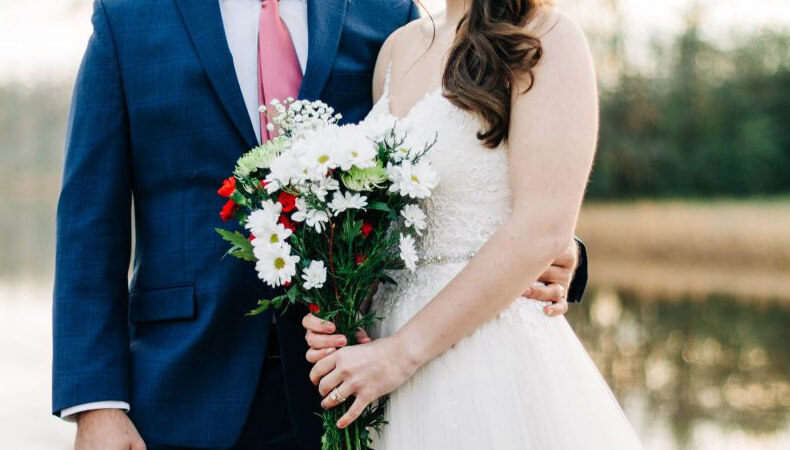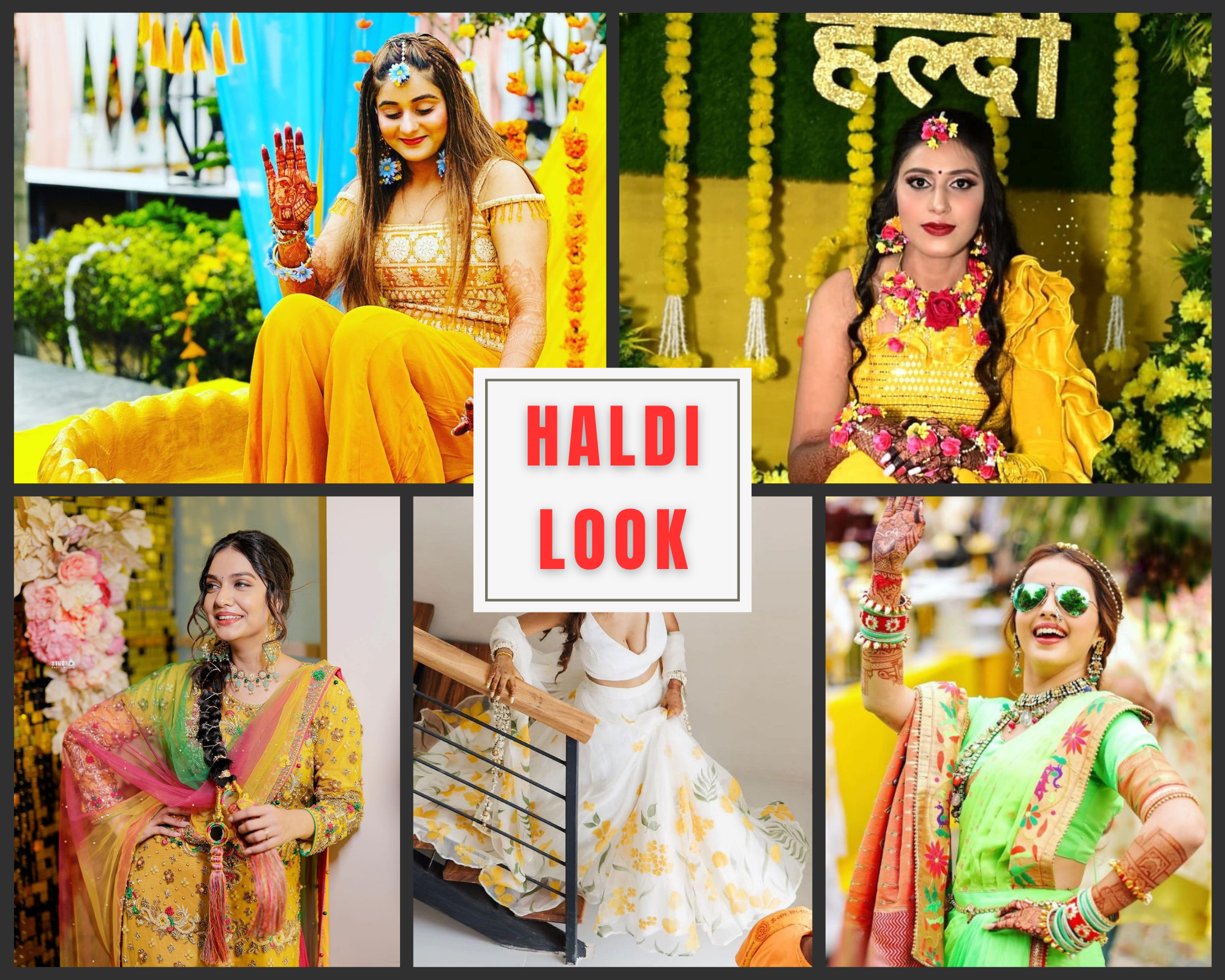The Arabian Sea, the Indian Ocean, and the Bay of Bengal in Asia surround it. India’s 29 states and seven union territories have shaped Indian culture. This civilization is among the world’s oldest.
When the variety of Indian dress is put under the spotlight, observers are struck by the sheer variety of stunningly beautiful traditional garments. Women’s sarees, salwar suits, lehengas, and other bridal wear, and men’s sherwanis, kurta pyjamas, Jodhpuri suits, etc., are known worldwide for their beauty and intricate embroidery.
Bengali Weddings
Groom
Dhoti kurta is the traditional Bengali groom’s clothing for wedding and reception celebrations, and most grooms opt to dress under their culture.
Bride
Bengali brides traditionally wear sarees made of Banarasi silk in deep red, deep maroon, or deep pink on their big day. Total crimson sarees with a gold zari border and butta embroidery are another favorite. There are three essential pieces of Bengali bridal jewelry: white conch shell bangles (Shakha), red coral bangles (Pola), and gold-plated iron bangles (Noa).
Maharashtrian Wedding
Groom
In Maharashtra, a silk dhoti and a kurta made of white or beige cotton are the standard attire for the groom. The kurta might be adorned all over with various patterns and styles. They might even throw on a turban for good measure.
Bride
Brides in Maharashtra typically don multicolored silk sarees with gold borders. The most common color combination is yellow or marigold with either red, green, or purple. The saree is Paithani, which is only six yards long, or it could be a more conventional Nauvari, which is nine yards or so.
Maharashtrian brides typically accessorize with traditional jewelry, including green bangles, Mangal sutras, long necklaces, and the customary Maharashtrian Nath. Her classic Maharashtrian Bindi, shaped like a crescent moon, decorates her forehead.
Gujarati Wedding
Groom
A dhoti and kurta have been the standard garb for a Gujarati groom for many years. The kurtas are made more attractive by adding a zari or border design and a few accessories, such as a brooch.
Bride
Women’s Gujarati wedding dresses are known for their elaborate use of mirrorwork and other reflective materials. And they immediately reveal your distinctive Gujarati flavor. Windy, bright, and pastel colors are popular for weddings in Gujarat.
Most Gujarati brides choose a ghagra choli with an elaborate dupatta. However, some prefer a lehenga. To increase their attractiveness, they adorn themselves with jewelry like Damini, rani haar, bangles, and butti (earrings).
Wedding in Karnataka
Groom
Traditional South Indian wedding attire for the groom includes a dhoti. They choose to wear a white or gold kurta.
Bride
White sarees with zari borders are traditional for brides in the Kannada region. While a select group of brides like to don vibrantly colored sarees draped in the conventional Coorg manner. A manga tikka, a long necklace, a waist belt, and bangles make up their traditional South Indian jewelry.
Ceremony in Rajasthan
Groom
The men’s wedding attire in Rajasthan is just as ornate and vibrant as the women’s. Mirror or Gota Patti’s work is extensively woven into Angrakha’s design. The grooms in Rajasthan wear dhotis with elaborate zari borders to complete their regal attire. Their attire centers on a page with intricate stonework that exquisitely represents Rajasthani culture.
Bride
Colorful wedding clothes are a tradition for brides in Rajasthan. Red ghagra cholis, or ranches, are traditionally worn on the wedding day. A vibrant dupatta is then draped over the bride’s head and shoulders to conceal her face during the ceremony. Gemstone jewelry, Rajasthani Nath, Juttis, etc., are some of the most popular bridal accessories.
Bihari Wedding
Groom
A Bihari groom would traditionally wear a dhoti and a kurta. The modern groom, however, is more likely to wear a kurta, pyjama or a suit. He accessorizes his dulia suit with a pair of pearl-decorated sehra and juttis with elaborate needlework.
Bride
Women wear lehengas in vivid colors like red, gold, and yellow at Bihari weddings. Bihari brides don a colorful designer saree for the Kanyadaan and Vidaai ceremonies. The bride accessorizes her ensemble with gold jewelry, including a choker, Kandahar, Tikli (maang tikka), and bangles.
Sikh Wedding
Groom
From turbans to sherwanis, Punjabi grooms have always been at the forefront of fashion. Accessories such as the mala, safe, kali, etc., are popular among Punjabi grooms.
Bride
The lehenga choli is the traditional bridal outfit for women in Punjab. Nonetheless, it gives the bride the exotic and extravagant appearance she deserves on her wedding day. Today, the embroidered dupatta is just as essential to the salwar kameez outfit as the kameez. They wear a variety of ornaments, including the maang tikka, necklaces, and bangles.
Here Are Some Best Wedding Magazines:
-
Femina Wedding Times
Grooms are also featured in this wedding magazine. You will find everything here, from nose rings to wedding outfits to suits and shoes for grooms.
-
Wedding Vows
This magazine is for brides who are looking for a South-Indian Wedding. This magazine features Bollywood clips and elegant accessory pairings.
-
Harper’s Bazaar Bride
It features trendy, shiny, bold edgy ideas. This magazine’s charming designs influence brides and couples. With add-ons like ‘When Art Weds Fashion,’ they set amazing retro vintage trends.
-
Brides Today
Aside from covering previous nuptials and ceremonies, this publication also previews collections from forthcoming fashion houses. It is a complete one-stop spot for brides.
-
Wedding Sutra
It contains everything you want and more. Tips for brides and grooms, destination weddings, personal blog snippets, and global bridal inspirations.
Conclusion
Traditional Hindu weddings bring together family and culture to celebrate the Bride and Groom. Hindu marriages, unlike their Western counterparts, have a strict clothing code that all attendees must adhere to. Everything worn, from apparel to accessories, is chosen carefully and has a purpose.



